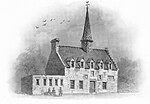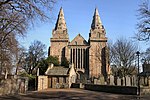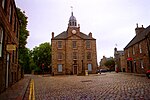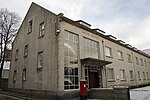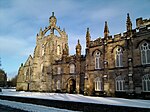Mitchell's Hospital Old Aberdeen

Mitchell's Hospital, Old Aberdeen, in Old Aberdeen, Scotland, was founded by the philanthropist David Mitchell in 1801 as follows: " .. from a regard for the inhabitants of the city of Old Aberdeen and its ancient college and a desire in these severe times to provide lodging, maintenance and clothing for a few aged relicks and maiden daughters of decayed gentlemen merchants or trade burgesses of the said city.. ". See the text of the 1801 Mortification or the conditions of the endowment. The Hospital is owned and managed by the University of Aberdeen, Aberdeen City Council and the Cathedral Church of St Machar in Old Aberdeen. The origins of the Hospital are due to various attempts by the Incorporated Trades and Merchants in Old Aberdeen to provide a "care home" for their elderly and infirm members and their "relicks".From 1801 until the beginning of the twentieth century, the hospital served as a refuge for "relicks" of Old Aberdeen Trade Burgesses. Mitchell's mortification laid down very specific conditions for eligibility. One of which gave preference in selecting residents to those who had the name "Mitchell". Originally, the residents lived a communal life with a strict system of management and care. A Board of Management carried out Mitchell's wishes to the letter. The operation of the hospital has been modified twice in the twentieth century to provide self-contained flats for elderly ladies. However, the original mortification by Mitchell determines its overall operation - within twenty-first century financial constraints.
Excerpt from the Wikipedia article Mitchell's Hospital Old Aberdeen (License: CC BY-SA 3.0, Authors, Images).Mitchell's Hospital Old Aberdeen
The Chanonry, Aberdeen City Old Aberdeen
Geographical coordinates (GPS) Address External links Nearby Places Show on map
Geographical coordinates (GPS)
| Latitude | Longitude |
|---|---|
| N 57.168819 ° | E -2.103568 ° |
Address
The Chanonry 9
AB24 1RN Aberdeen City, Old Aberdeen
Scotland, United Kingdom
Open on Google Maps
